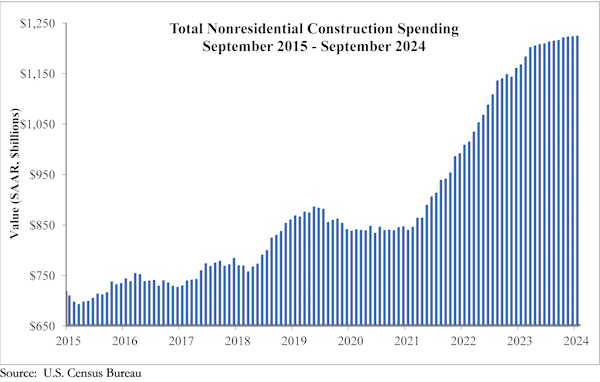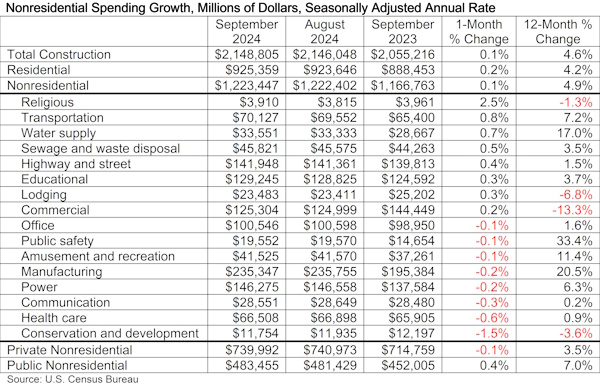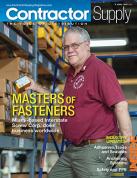Construction Spending Rises 0.1% in September
A recent federal report shows that construction spending rose 0.1% in September, totaling $2.15 trillion at a seasonally adjusted annual rate.
 Data on spending from the U.S. Census Bureau was analyzed by both Associated Builders and Contractors and the Associated General Contractors of America.
Data on spending from the U.S. Census Bureau was analyzed by both Associated Builders and Contractors and the Associated General Contractors of America.
The September rate was an increase of 0.1% from the August rate and 4.6% year over year.
National nonresidential construction spending increased 0.1% in September, with seasonally adjusted annualized basis, nonresidential spending totaled $1.22 trillion.
Spending was up monthly in half of the 16 nonresidential subcategories. Private nonresidential spending decreased 0.1%, while public nonresidential construction spending was up 0.4% in September.
“Construction spending inched higher in September, with growth fueled by ongoing infrastructure investment,” said ABC Chief Economist Anirban Basu. “Spending accelerated in several publicly funded segments in September, including highway and street, sewage and waste disposal and water supply.”
The privately funded nonresidential construction segment didn’t perform as well for the month, with spending in that segment contracting for the second time in the past three months.
Per the analysis, in addition to infrastructure, spending increased by .06% for data centers for the month and has risen 48% over the past 12 months.
 Highway and street construction climbed 0.4% and 1.5%, respectively, and investment in transportation projects such as airports and rail rose 0.8% and 7.2%, respectively. But spending on multifamily housing and most private nonresidential segments other than data centers declined in September, Simonson added.
Highway and street construction climbed 0.4% and 1.5%, respectively, and investment in transportation projects such as airports and rail rose 0.8% and 7.2%, respectively. But spending on multifamily housing and most private nonresidential segments other than data centers declined in September, Simonson added.
“Despite September’s decline, private nonresidential construction spending remains less than 1% below the all-time high established in June,” said Basu. “Given ongoing manufacturing megaprojects and healthy backlog levels, according to ABC’s Construction Backlog Indicator, the nonresidential segment should hold up well as the industry waits for lower borrowing costs and looser lending standards to arrive.”














